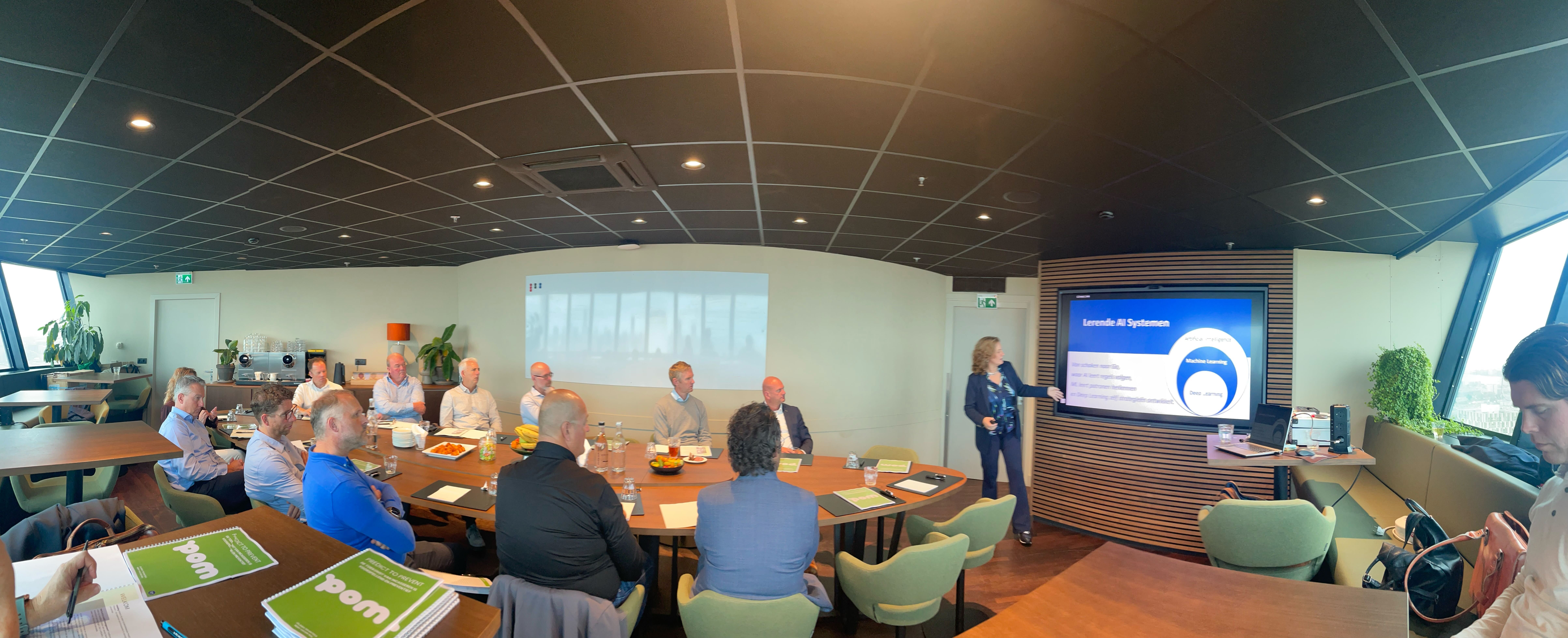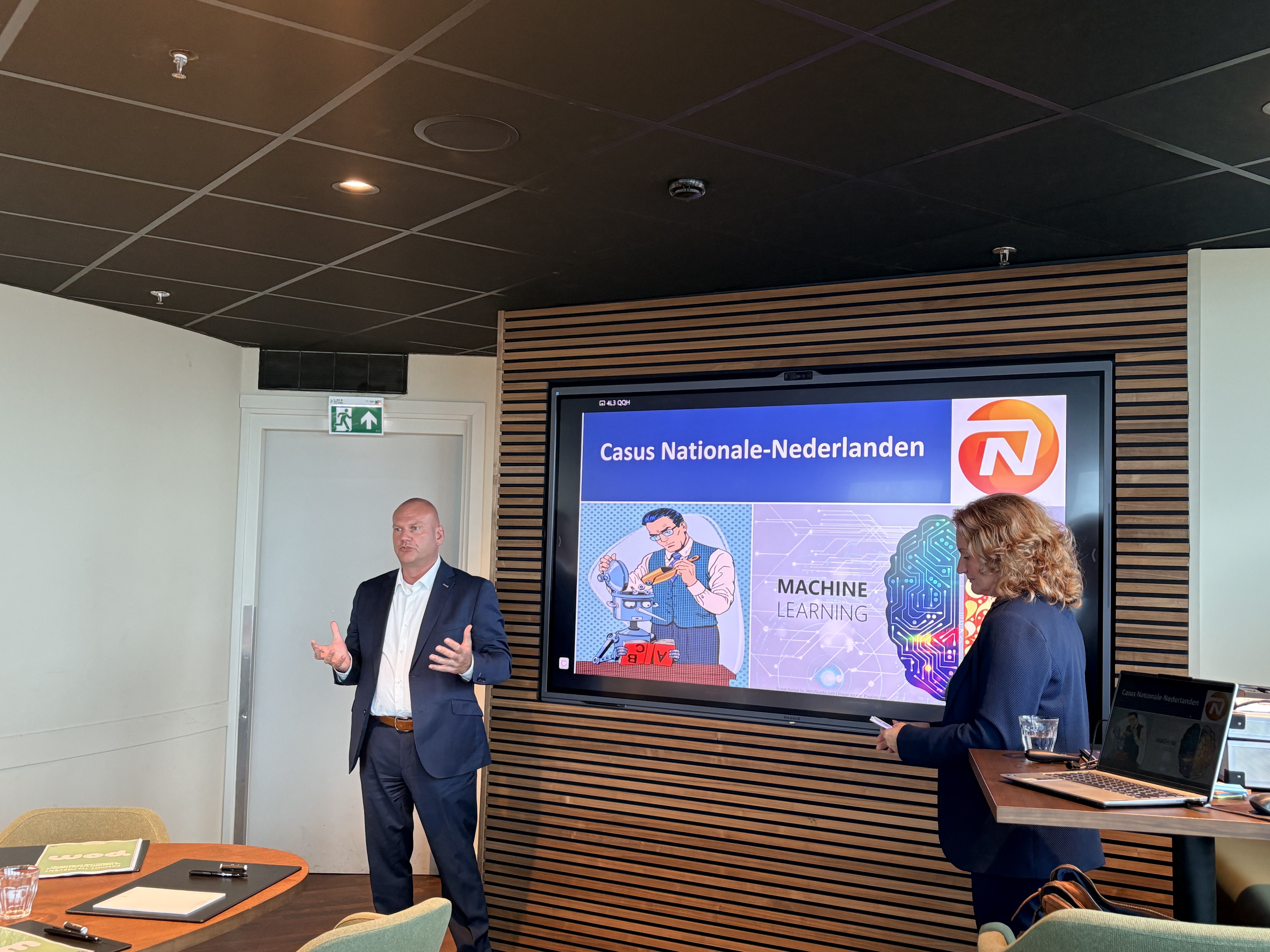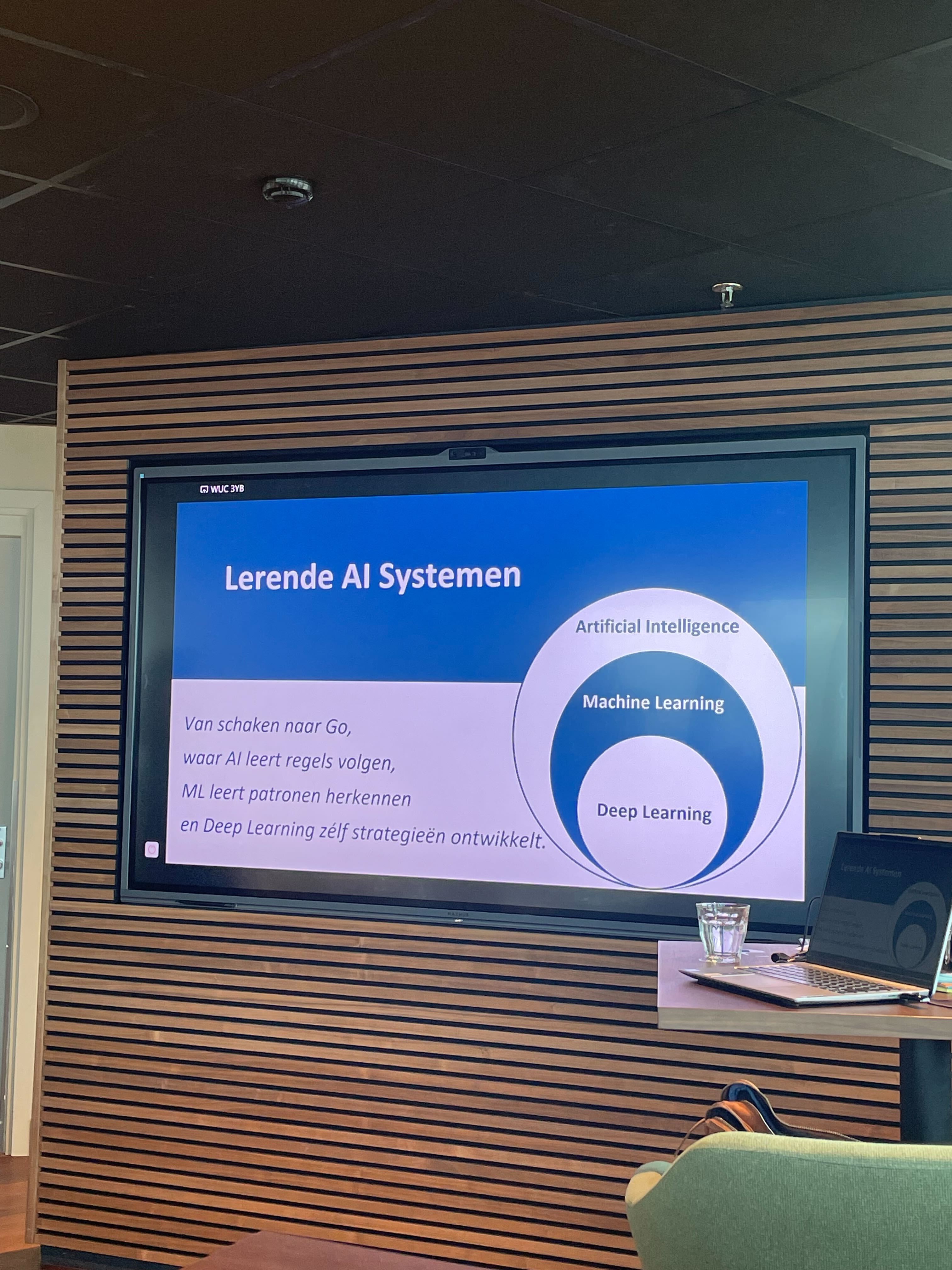“Predict to Prevent” insurers round table meeting
There's no stopping it: AI is conquering the world. In the insurance industry, too, many organizations use AI tools to make their work easier. At POM's “Predict to Prevent” round table meeting on September 18 at the Euromast in Rotterdam, professionals from this sector delved deeper into the topic together with AI expert Jolanda ter Maten and Berry van der Wal from Nationale-Nederlanden. An important lesson: as a person, always keep an eye on the pulse when using AI.

Because yes, AI is fantastic, Ter Maten begins her story. Then immediately warn: “But you shouldn't use it indiscriminately. First, you want to understand: what does AI actually do with the data we give it? And not only for ethical reasons, but also: how does the system learn based on that data and how does it achieve a certain result? ChatGPT, for example, isn't an oracle where the truth or the right answer always comes out. You have to be aware of that.”
AI, machine learning, and deep learning
Ter Maten then explains the differences between AI, machine learning and deep learning. “AI is the bigger picture and learns to follow rules based on information that people give to the tool. Machine learning is a part of AI that learns to recognize patterns and to continue learning based on them. Machine learning therefore comes to conclusions that humans have not put into it. Deep learning goes one step further and develops its own strategies.”
Babysitting
Almost all machine learning that we use today has deep learning in it, says Ter Maten. “And this is where we have to be careful,” she warns again. “Because this is a point where AI can be very powerful, but also dangerous. AI sees patterns that we don't see and thus develops strategies that have never occurred to us. Let's say you have a complex problem and you give AI carte blanche to solve it. What then? Because you have no idea what kind of assumptions AI makes. That's also something to be aware of.”
Collaborate with AI
The use of AI has consequences for the workplace, says Ter Maten. “We need to work with our human qualities with the qualities of AI. Because AI is certainly going to take over tasks, but other tasks will take its place.” An important role that Ter Maten sees for humans is in training AI systems. “As experts in our own field, we play an important role in choosing the data to use to train AI. And also to determine: based on what criteria should the system make decisions?”
This shouldn't be an IT party, says Ter Maten. “The right thing to do should be done with as diverse a group of employees as possible. So also people who watch from a compliance or ethical point of view, for example. Because it is precisely the content experts that are absolutely essential to understand what the system should actually do for us.”


Business Case
Berry van der Wal: “Leave everything to AI?”
During the meeting, Berry van der Wal, In- & Excasso Particulier manager of Nationale-Nederlanden, told how his organization started machine learning ten years ago. “We were given the freedom to set up the most modern process. That's why we asked POM — then called Mail to Pay — for advice. At the time, we were already working with them on payment links and iDEAL payments. It just so happened that they were looking for a partner for a machine learning pilot. We were then asked if we dared to let go of everything — people, processes, the organization — and leave the collection process to AI.”
Customer Retention
It was an exciting time for Berry and his colleagues. “You're used to being in control of the debt collection process yourself. If you hand that over to ai, it uses data and algorithms to figure out how and when to best approach the customer for the best chance of payment. That was a whole new world for us.” The results are hugely positive, says Berry. “We reach customers faster and collect faster. In the pilot, we started with a small life insurance portfolio. We now use machine learning for the entire customer base, around 1 million customers. The number of life insurances that we have to terminate due to payment arrears has been drastically reduced. So that's just customer retention.”
Evolution
Letting go of all the strings is one thing, not worrying about the process at all is quite another thing. Nationale-Nederlanden is therefore emphatically keeping its finger on the pulse. “We always look at the results afterwards,” says Van der Wal. “Basically like an A/B test that runs continuously. For example, our machine learning has all kinds of text templates with minor differences that it can choose from. We want to see which approach works best.”
Social debt collection
Despite determining the optimal collection time and channel for quick payment, there is also a group that simply cannot pay. “When we see that payment is difficult, we quickly refer to Geldfit,” says Van der Wal. “And all outputs have included my team's phone number since the start of the pilot, so customers can call our department immediately if payment fails. We want to help these people as quickly as possible.”
Predict to prevent
In addition, Nationale-Nederlanden has two pilots running with forecasting models. “We want to know which customers might get into trouble, even before they are in arrears. With preventive AI, we try to predict that so that we can approach them proactively if necessary.
Debrief
“By giving feedback, we as humans keep control of AI”
During the debriefing, it became clear how important it is to keep a close eye on AI as a person. For example, it was quickly concluded that AI does not take into account the unexpected, such as the Covid outbreak in 2020. “The context in which we live is constantly changing,” says Ter Maten. “That's why, as humans, we need to keep interpreting what AI does and adding nuances.”
Another important issue that came up: automation versus a personal approach. How do you find the balance in that? According to Ter Maten, it is a myth that AI makes the process less human. “In fact, AI offers the opportunity to approach the collection process in a human way. Because it takes so much work off your hands. What we have to do as humans is pay attention. What does the system do? And giving feedback: this was or was not a good suggestion. This way, as humans, we stay in control of AI and can use it however we want.”
.jpg)
.jpg)
